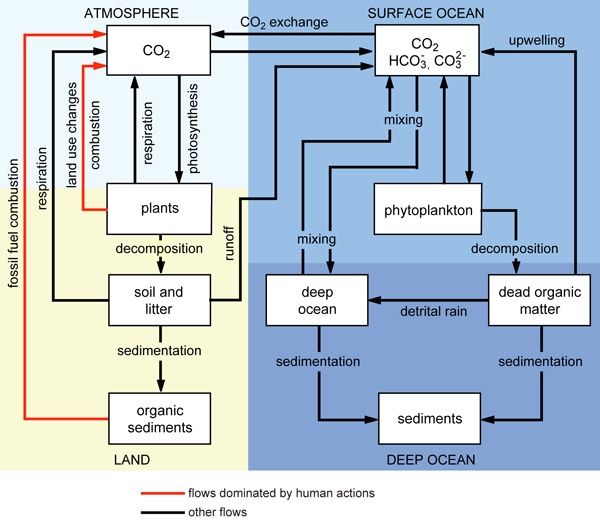Shahzeen Attari says that we need to change both our behaviour and adopt energy-efficient technologies to land the biggest individual blows in the fight against global warming. While this may sound like just another call to try harder to cut greenhouse gas emissions, it’s instead an attempt to tackle the downsides of each approach. As a researcher working at New York’s Columbia University she has found that most people’s first choice to try and cut emissions is to reduce – or curtail – their energy usage.
“I think people go for curtailment automatically because it does not involve any upfront cost, so it is inexpensive,” Attari said. “It may be thought of as easy to do and think about in the short term. The problem is that it requires continued vigilance to maintain one’s curtailment efforts, so people may relapse into using as much energy as they did before.”
Meanwhile, bizarre as it may sound, switching to more efficient technology alone can lead to an increase in energy consumption, or at least less of a reduction than you might expect. Attari highlights a recent study looking at what happens when people buy efficient clothes washing machines. “Households increase clothes washing by about 6 percent once they received the efficient washer, though in this case there was still a net energy saving,” she recalled. As a result it’s important both to have efficient products and to limit their use.
The fact that we only have a limited amount of time and attention to dedicate to our environmental impact is another challenge, and often leads to what Attari calls ‘single-action bias’. “When individuals face a problem, they may be willing to do one or two things to address the problem and believe that they have done their part,” she said. The trouble with this, Attari explained, is that at the moment the first actions that we’re likely to take are not necessarily the most effective ones. “If individuals have limited amount of effort to expend they may go after actions, such as turning off the light, that do not save as much energy as other actions, such as carpooling or buying an efficient car,” she said.
That judgement is based on results from a research paper where Attari and her colleagues surveyed 505 people found through community website network Craigslist about what they thought the most effective energy consumption measures were. The confusion that they found is partly explained because even the researchers found it hard to work out and check the actual energy use figures. Attari therefore thinks that the information should be much more widely available. “If people understand the amount of energy a light bulb uses in an hour, we can state how much energy other devices use in terms of light bulbs so that people can make cross-category comparisons,” she said. However she does point out that some people have tried to fill this information gap with lists of possible actions.
Attari pointed out that the importance of cutting energy use in fighting climate change is well illustrated by the following image:

Principal reservoirs and flows of the biospheric carbon cycle. Source: Vaclav Smil, Global Material Cycles and Energy
“The red arrows are the human-caused carbon conversions from fixed carbon in sediments, such as fossil fuels, to the atmosphere as carbon dioxide, by burning those fuels,” she explained. “Carbon dioxide is a greenhouse gas, which means it causes the atmosphere to reduce the amount of heat that can escape into space after the earth’s surface is warmed by the sun. Since most of our energy is based on fossil fuels, we are releasing a lot of carbon dioxide into the atmosphere. This leads to a ramping up of the greenhouse effect, and warms the planet more than what would naturally occur, leading to changes in the natural climate. Therefore our consumption of energy is leading to global climate change.”
Continued challenges to this position are welcome, Attari says, but the supporting evidence is so overwhelming that any such discussions “should not hinder progress towards solving an urgent and crucial problem”.
“As scientists we need to make energy and carbon dioxide more visible to people,” Attari said. “Our study shows that people severely underestimate energy consumption – perhaps in large part because energy is so invisible. We have it in our power to significantly decrease our energy consumption to address climate change with current technologies. By curtailing our consumption and by adopting energy efficient devices we can begin to reduce our carbon emissions today.”
- The main “short list” of most effective actions that a householder can take to curtail carbon emissions that Attari used in her research is discussed in the following article:The Short List: The Most Effective Actions U.S. Households Can Take to Curb Climate Change
- and the list itself is
- . If you have more time to spend, I looked at a number of carbon footprint calculators that provide more personalised suggestions of actions you can take



November 24, 2010 at 10:28 pm
[…] Shahzeen Attari, environmental engineer, Columbia University, New York, US: […]
December 29, 2010 at 7:20 pm
[…] on either changing our behaviour or using more efficient technology could be counter-productive, Shahzeen Attari and Jens Borken-Kleefeld warn. That’s because our willpower is not always strong enough to […]